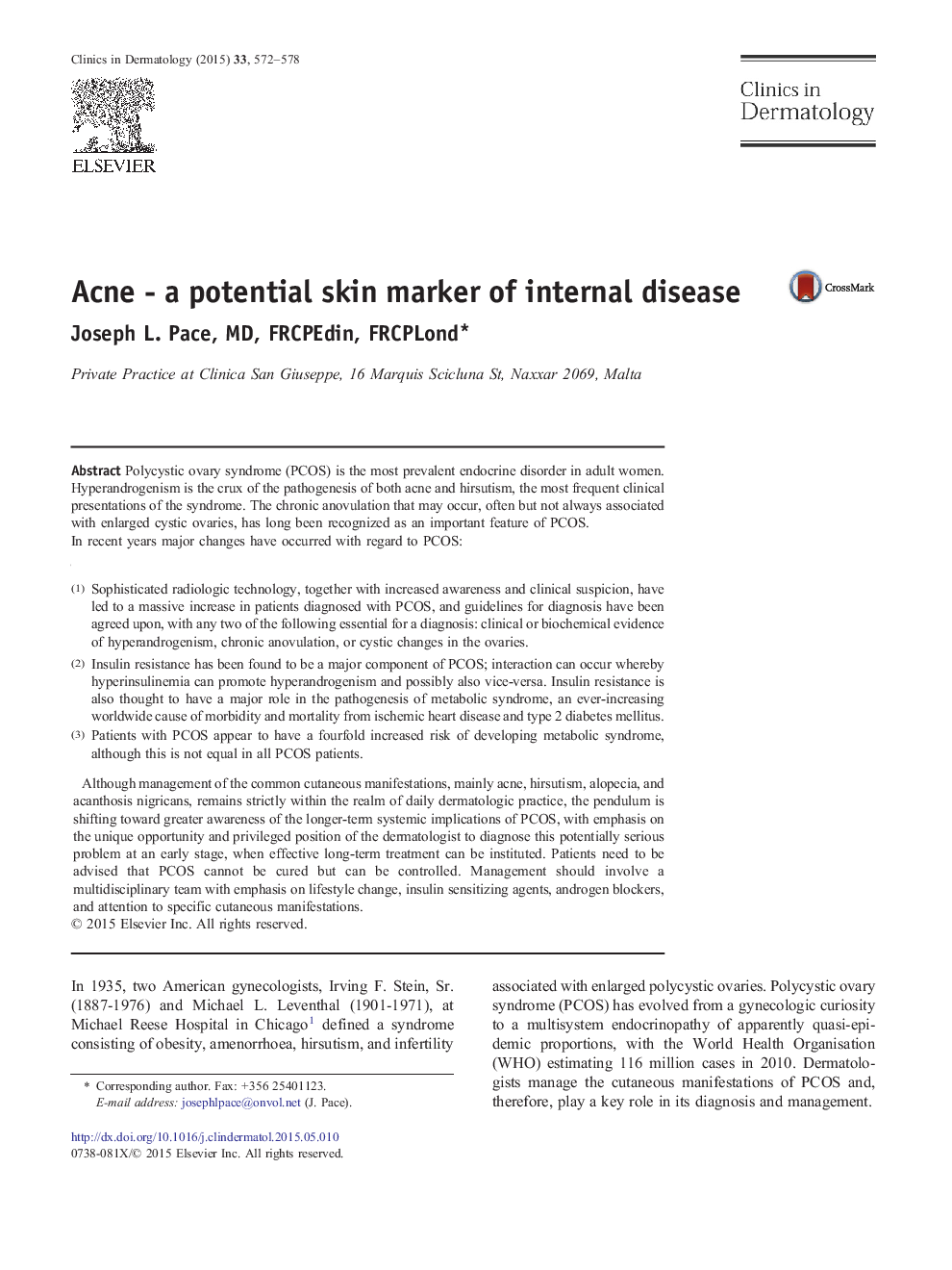| Article ID | Journal | Published Year | Pages | File Type |
|---|---|---|---|---|
| 3194021 | Clinics in Dermatology | 2015 | 7 Pages |
Polycystic ovary syndrome (PCOS) is the most prevalent endocrine disorder in adult women. Hyperandrogenism is the crux of the pathogenesis of both acne and hirsutism, the most frequent clinical presentations of the syndrome. The chronic anovulation that may occur, often but not always associated with enlarged cystic ovaries, has long been recognized as an important feature of PCOS.In recent years major changes have occurred with regard to PCOS:(1)Sophisticated radiologic technology, together with increased awareness and clinical suspicion, have led to a massive increase in patients diagnosed with PCOS, and guidelines for diagnosis have been agreed upon, with any two of the following essential for a diagnosis: clinical or biochemical evidence of hyperandrogenism, chronic anovulation, or cystic changes in the ovaries.(2)Insulin resistance has been found to be a major component of PCOS; interaction can occur whereby hyperinsulinemia can promote hyperandrogenism and possibly also vice-versa. Insulin resistance is also thought to have a major role in the pathogenesis of metabolic syndrome, an ever-increasing worldwide cause of morbidity and mortality from ischemic heart disease and type 2 diabetes mellitus.(3)Patients with PCOS appear to have a fourfold increased risk of developing metabolic syndrome, although this is not equal in all PCOS patients.Although management of the common cutaneous manifestations, mainly acne, hirsutism, alopecia, and acanthosis nigricans, remains strictly within the realm of daily dermatologic practice, the pendulum is shifting toward greater awareness of the longer-term systemic implications of PCOS, with emphasis on the unique opportunity and privileged position of the dermatologist to diagnose this potentially serious problem at an early stage, when effective long-term treatment can be instituted. Patients need to be advised that PCOS cannot be cured but can be controlled. Management should involve a multidisciplinary team with emphasis on lifestyle change, insulin sensitizing agents, androgen blockers, and attention to specific cutaneous manifestations.
